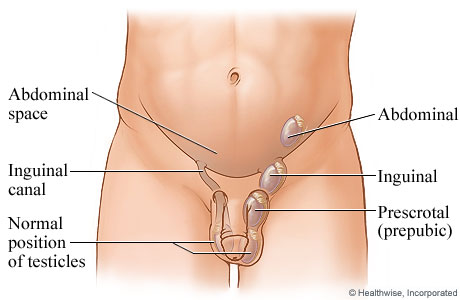Undescended Testicle
Undescended testicles are a common childhood condition where a boy’s testicles are not in their usual place in the scrotum.
During pregnancy, the testicles form inside a baby boy’s abdomen (tummy), before slowly moving down into the scrotum about a month or two before birth.
It’s not known exactly why some boys are born with undescended testicles. Most boys with the condition are otherwise completely healthy.
Undescended testicles are often classified according to their location and whether they can be felt (palpable or nonpalpable).
